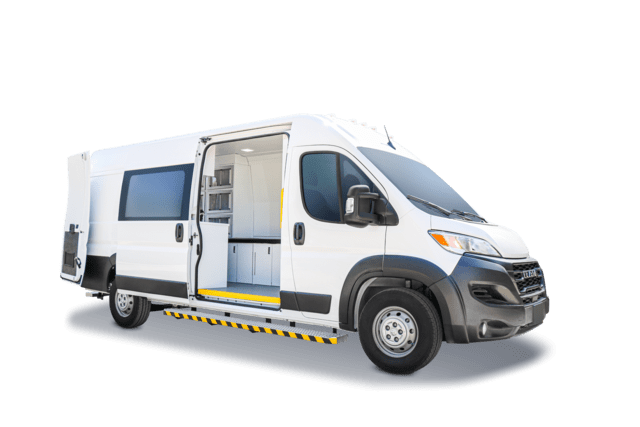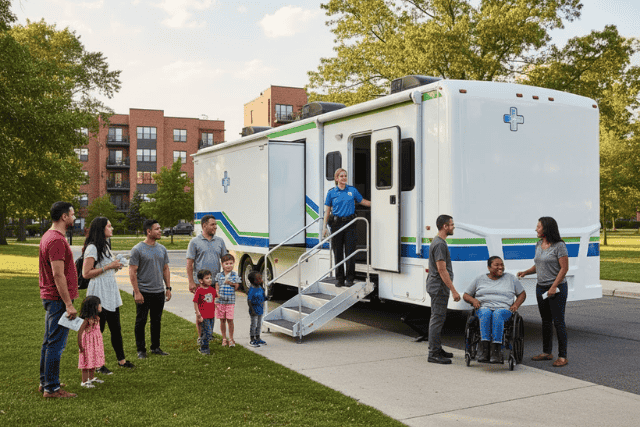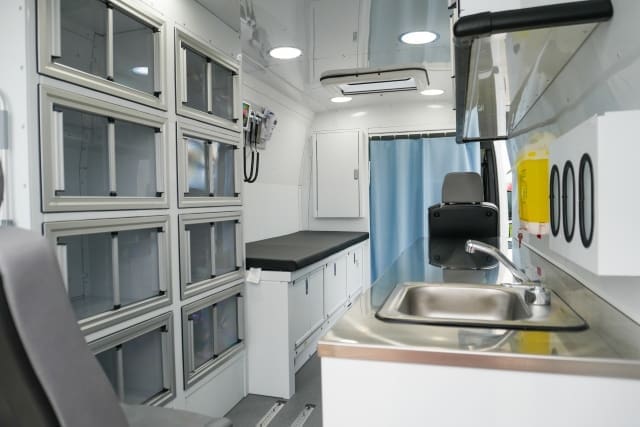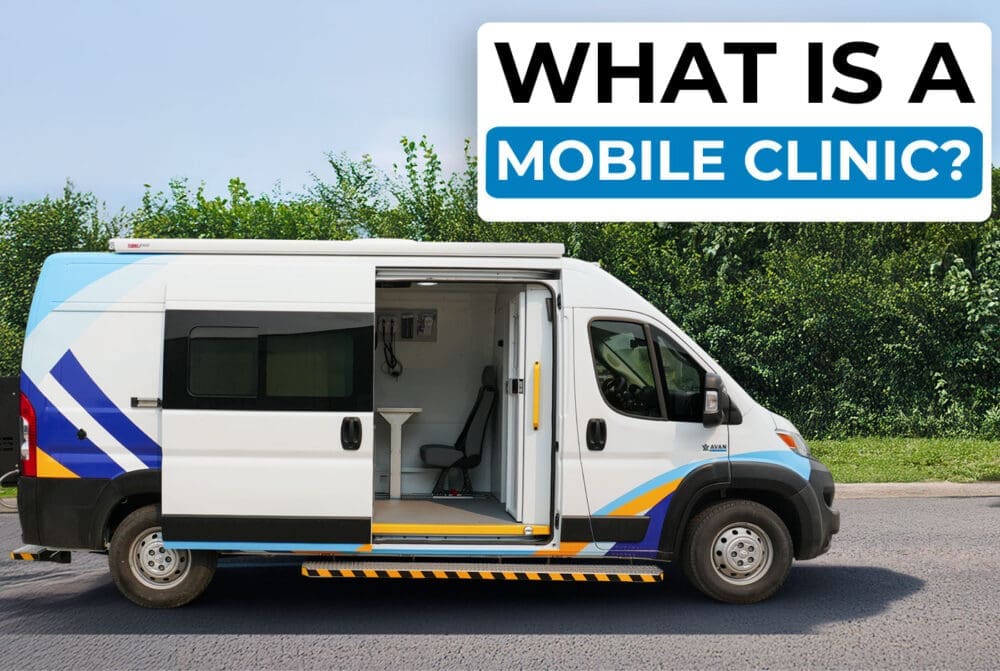Is your organization finding it challenging to provide healthcare services to remote areas? Are you struggling to reach underserved communities? Do you feel the pressure of ensuring your target communities have access to medical care despite geographic challenges?
If so, you’re not alone. Many healthcare providers face the same problem: reaching patients who can’t easily visit a clinic or hospital. It’s frustrating, and sometimes it feels like there’s no good solution.
You might wonder, “Can we offer telehealth from a mobile medical vehicle?” This question is important because you want to deliver quality care without the limitations of location. You want to be sure your patients get the help they need, no matter where they are.
At AVAN Mobility, we understand your concerns and know how vital it is to remove barriers to healthcare. That’s one of the reasons why we’ve been manufacturing mobile medical vehicles for organizations like yours for over 10 years.
We know there are other mobile medical van manufacturers out there. While we may not be the best fit for all, we still want to help you explore how telehealth from a mobile medical vehicle can be the answer you and your patients are looking for.
What is telehealth and why is it important?
Telehealth is the use of digital information and communication technologies to access and manage healthcare services remotely. This means doctors and patients can connect using phones, tablets, or computers. Telehealth includes services like video consultations, remote monitoring, and online health education.
Access to care: Telehealth lets patients in remote areas get medical advice. That means they don’t have to travel long distances to a hospital.
Convenience: Patients can consult with healthcare providers from the comfort of their homes.
Cost-effective: It reduces the need for in-person visits. This saves time and money for both patients and healthcare providers.
Improved health outcomes: Regular access to healthcare helps people manage chronic diseases. It can also result in quicker intervention for acute issues.
Telehealth is changing the way people think about healthcare delivery. It’s bridging gaps and bringing medical services directly to those who need them most.
How does telehealth work from a mobile medical vehicle?

Providing telehealth from a mobile medical vehicle combines the best of both worlds. It offers the accessibility of telehealth and the mobility of a vehicle. Here’s how it works:
Office space: The mobile medical vehicle must have a designated space that serves as a mini-clinic. This includes a desk, chairs, and the necessary medical equipment.
Internet connection: A reliable internet connection is required for telehealth services. Satellite internet services like Starlink are excellent options. They provide high-speed internet even in remote areas.
Instead of using cables or towers on Earth, Starlink sends internet signals from satellites way up above us. It’s like having a bunch of internet hotspots floating around in space, beaming the internet down to people’s homes and devices. The nice thing about Starlink is that it works while you’re moving.
That means you’ll still be able to provide telehealth services from your moving mobile medical unit.
Technology: Telehealth requires devices like computers, tablets, or smartphones. Ensure these devices have the necessary software for video consultations, electronic health records, and other telehealth services. Zoom is an example of a commonly used application for video consultations.
Power supply: A mobile medical vehicle should have a robust power supply where you can plug in your devices.
Conducting telehealth services
Telehealth services in a mobile medical vehicle can work in a few ways to make healthcare more accessible to everyone. Here’s how:
1. Remote video consultations
Picture someone living far from a hospital or doctor’s office. With telehealth in a mobile clinic, a healthcare team member can chat with them over video. They can discuss symptoms, review medical history, and even do virtual check-ups through video calls. This means the person gets medical help without having to travel long distances.
2. Stationary telehealth hub
Another way is to park the mobile clinic in an area that’s accessible to patients. From there, you can offer telehealth appointments with specialists from other places. People from the local community can visit the mobile unit and have telehealth meetings with doctors from different cities or states.
For instance, someone living in a rural area could see a brain specialist through a video call from the mobile clinic. This setup helps folks in underserved areas get specialized care without traveling far. This is especially helpful for people without internet services. It’s also ideal for those without the devices required for telehealth appointments.
Scheduling appointments: You should make booking appointments easy for your patients. For the best results, consider setting up an online telehealth booking system directly on your website.
Patient education: The vehicle can also serve as a center for health education. Your team can offer informational materials and workshops to improve the overall healthcare outlook.
What do the statistics on telehealth say?
- A report showed that 80% of people have used telehealth at least once. This is great news for people in remote areas. The same report found that more people over 55 and those in rural areas now use telehealth.
- Many young people prefer telehealth. About 74% of them like telehealth because it saves time and they don’t have to sit in waiting rooms. For mental health care, 96% of patients said they were happy with telehealth.
- More than half of the people who use telehealth think it offers better care than regular visits. They find it more convenient, and many have even wanted to keep using it after the pandemic. Only 5% of telehealth appointments need a face-to-face follow-up, showing how well it works.
Your next steps to providing telehealth services from a mobile medical vehicle
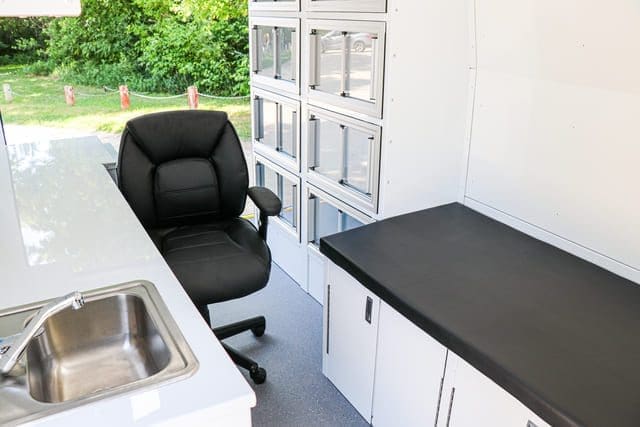
You made it to this article while trying to figure out if telehealth services work from a mobile medical vehicle.
As you can see, providing telehealth from a mobile medical vehicle is not only possible but also incredibly effective. It solves the problem of healthcare accessibility by bringing medical services directly to patients, no matter where they are.
At AVAN Mobility, we’re committed to removing barriers to healthcare. We do that by manufacturing different types of mobile medical vans that organizations like yours can use. While the combination of telehealth and mobile medical vehicles may seem intimidating initially, you can ensure your community receives the care it needs. It’s a step towards a future where healthcare is accessible to everyone, everywhere.
If you want to expand your healthcare reach, consider telehealth. It’s a game-changer in the world of healthcare delivery. Click the button at the end of this article to talk to a mobility expert to get started.
Or, keep learning more about mobile medical vans, starting with this article on how to choose one. You’ll learn some insights that’ll bring you closer to deciding what will work for your organization and the patients you’ll be serving.
You should also check out our article on mobile medical van customization. After reading, you might find that the Mobile Clinic Van’s desk space and power supply will be the perfect fit for telehealth services.
FAQ
Q: Can telehealth from a mobile medical vehicle handle emergencies?
A: Telehealth is excellent for non-emergency consultations. The vehicle can serve as an emergency triage center. Keep in mind that patients with severe conditions should be directed to the nearest hospital.
Q: What kind of internet connection is needed for telehealth services?
A: A high-speed, reliable internet connection is crucial. Satellite services like Starlink provide excellent coverage. They even work in remote areas, ensuring seamless telehealth consultations.
Q: Are telehealth consultations as effective as in-person visits?
A: For many conditions, telehealth consultations are just as effective as in-person visits. They allow for thorough patient-doctor interactions, remote monitoring, and follow-ups. However, some conditions may still require physical examinations.
Q: How is patient privacy maintained during telehealth consultations?
A: Telehealth platforms use encrypted connections to ensure patient privacy. The mobile medical vehicle should also have a private area for consultations. This will help keep patient information confidential.
